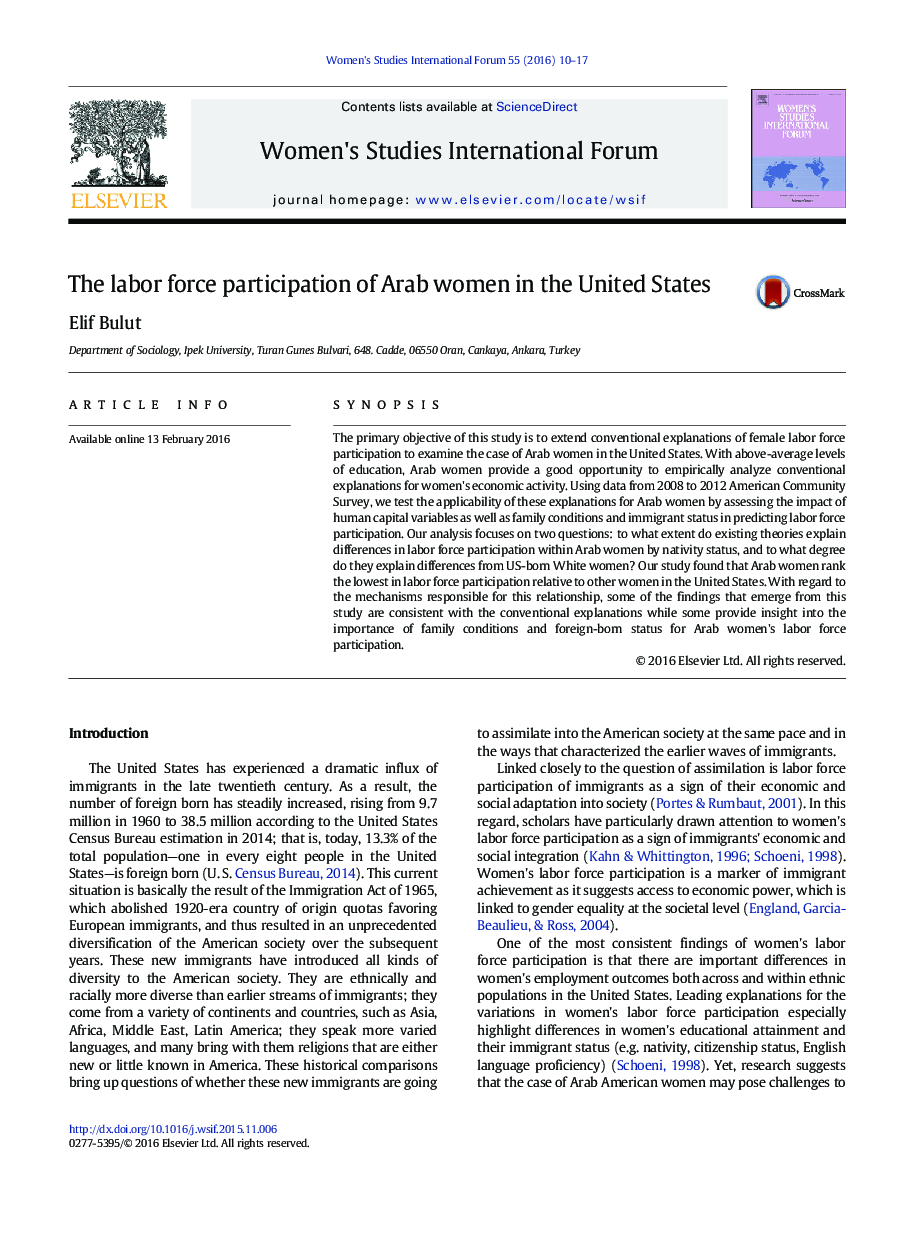| کد مقاله | کد نشریه | سال انتشار | مقاله انگلیسی | نسخه تمام متن |
|---|---|---|---|---|
| 375969 | 622843 | 2016 | 8 صفحه PDF | دانلود رایگان |
• Despite their higher educational attainments relative to many groups in the US, Arab women rank the lowest in their in labor force participation rates across all groups.
• Foreign-born Arab women are much less likely than native-born Arab women to participate in the labor force.
• Arab women are disadvantaged relative to other women in the United States in some aspects: Arab women are the youngest group compared to all other women in the United States, they are more likely to be married, to have preschool children at home, and to have the shortest length of stay in the United States, factors that are shown to reduce labor force participation for women.
• English fluency appears to be the most influential variable for foreign-born Arab women's labor force participation along with education.
SynopsisThe primary objective of this study is to extend conventional explanations of female labor force participation to examine the case of Arab women in the United States. With above-average levels of education, Arab women provide a good opportunity to empirically analyze conventional explanations for women's economic activity. Using data from 2008 to 2012 American Community Survey, we test the applicability of these explanations for Arab women by assessing the impact of human capital variables as well as family conditions and immigrant status in predicting labor force participation. Our analysis focuses on two questions: to what extent do existing theories explain differences in labor force participation within Arab women by nativity status, and to what degree do they explain differences from US-born White women? Our study found that Arab women rank the lowest in labor force participation relative to other women in the United States. With regard to the mechanisms responsible for this relationship, some of the findings that emerge from this study are consistent with the conventional explanations while some provide insight into the importance of family conditions and foreign-born status for Arab women's labor force participation.
Journal: Women's Studies International Forum - Volume 55, March–April 2016, Pages 10–17
